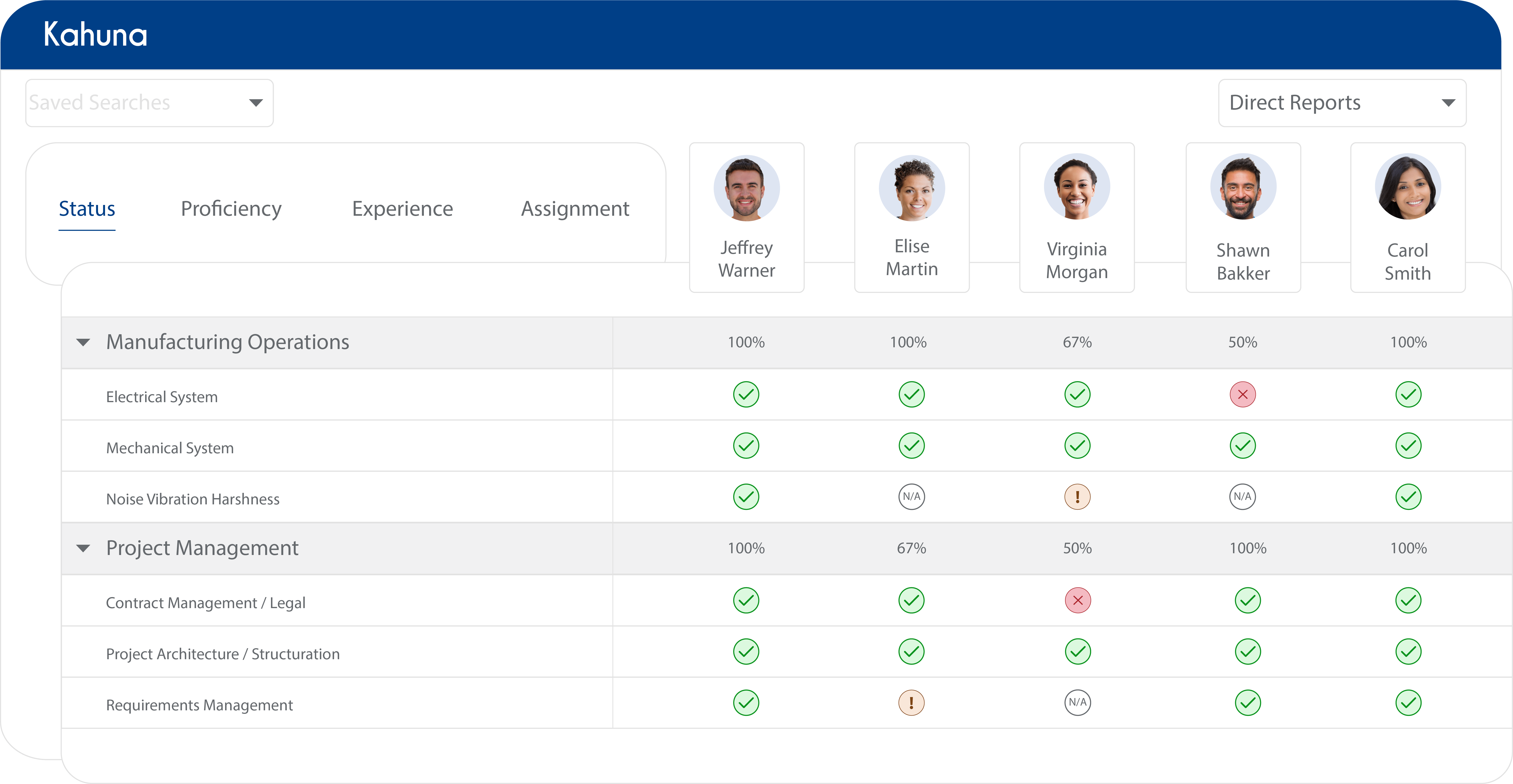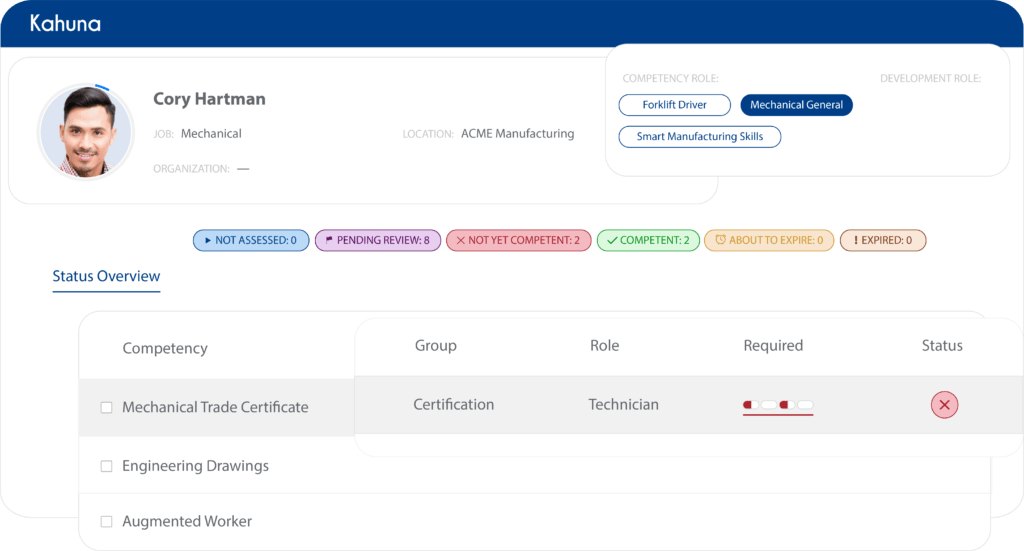
In an enlightening session with Jai Shah, CEO of Kahuna, on IMD industry insights, we explore the evolving challenges and strategies in manufacturing workforce development. Shah, with his extensive experience in HR technology transformations, shares invaluable insights into tackling the pressing issues of labor and skills shortages in the industry.
The Core Challenges in Manufacturing Labor
Shah highlights the challenge in the manufacturing industry as the mismatch between available skills and rapidly changing industry demands. He explains, “The biggest challenge comes down to the availability of the right skills to do the work required in an ever-changing environment.” The initial labor shortages observed during COVID have transitioned into a more complex issue of skill shortages. A survey by Deloitte and The Manufacturing Institute reports that the industry is expected to face a shortfall of 2.1 million skilled jobs by 2030. Manufacturers now grapple with not only finding sufficient workers but ensuring they possess the necessary skills for modern manufacturing processes.
The Evolution of Skills Management
Emphasizing the critical role of skills management in bridging the labor gap, Shah explains, “We started to notice a particular challenge for certain technologies to surface that data, collect that data, manage it, and give it back to operations in a way that they could make use of it.” A report by McKinsey & Company highlights that 87% of businesses are either currently facing or anticipating a shortage of skilled workers due to automation and digitization. Today’s workforce comes with a set of inherent skills, often overlooked, that are crucial in the digital manufacturing era. Effective skills management involves identifying these inherent skills, addressing skill gaps through personalized training, and rapidly aligning workforce capabilities with operational needs.
Combating Employee Burnout
To address employee burnout, Shah suggests a proactive approach to recognizing and valuing employees’ skills. “People are not afraid of work if they’re valued for the work that they do,” Shah remarks, highlighting the importance of acknowledging and compensating employees’ skills. A formal skills program can help in identifying key skilled workers, tracking their engagement, and providing them with clear career progression paths. This approach not only mitigates burnout but also fosters a culture of appreciation and growth within the organization.
The Holistic Impact of Skills Management
Shah brings to light the comprehensive impact of skills management on a company. “It’s really a shot in the dark as to whether a workforce is going to be prepared to meet that future goal,” Shah comments, emphasizing the importance of aligning workforce capabilities with strategic goals, such as net-zero emissions. A skills management platform, he explains, allows for the systematic development of necessary skills like carbon sequestration and offset, ensuring that the workforce can meet future organizational goals. This proactive approach helps companies navigate the evolving industrial landscape with a more prepared and adaptable workforce.
 Integration of Apprenticeship Programs
Integration of Apprenticeship Programs
In discussing the integration of apprenticeship programs, Jai Shah highlights Kahuna’s crucial role in bolstering these initiatives. He notes, “The craft worker skilling journey often requires a mentorship or apprenticeship kind of relationship. Kahuna’s approach involves strategically identifying the most effective mentors within the workforce and pairing them with apprentices. This method not only streamlines the learning process but also ensures a more personalized and impactful training experience.
Shah further elaborates on the value of this mentorship, explaining how Kahuna’s platform is designed to gather and utilize data throughout the apprenticeship. This data collection is key to optimizing the training process and ensuring that apprentices are workforce-ready upon completion of the program. As an illustrative example, Shah cites Stanley Black & Decker, which has successfully implemented workforce development strategies that align with this approach. Their experience underscores the effectiveness of integrating structured mentorship and data-driven insights in apprenticeship programs, setting a standard for others in the industry.
Engaging with Kahuna for Skills Management
For manufacturers eager to collaborate with Kahuna, Shah lays out a practical and incremental approach. “You don’t have to be perfect to get started on this journey,” Shah advises, recommending starting with identifying the most critical skills needed in specific operations and then systematically exposing these to the workforce. He stresses that the journey towards a skills-based workforce does not require perfection from the outset but rather a commitment to continuous improvement and adaptation. Shah cites the example of Stanley Black & Decker to demonstrate Kahuna’s ability to adapt and implement skills management across various industries, including manufacturing and healthcare.
Navigating the Future: Embracing Workforce Transformation in Manufacturing
As we reflect on the insightful discourse with Jai Shah, CEO of Kahuna, it becomes evident that the manufacturing sector is at a critical crossroads. The inevitable transition from a job-based economy to one that is skills-based is not just imminent; it is imperative. The array of challenges brought to the forefront – from acute labor shortages, a byproduct of the COVID-19 pandemic, to the dynamic shifts in technological advancements – calls for a decisive and robust approach centered around strategic workforce development and adept skills management.
In the era of intelligent manufacturing, the demand is for a workforce that is not just competent but also versatile, skilled, and prepared to tackle novel challenges head-on. Shah’s visionary leadership and the strategic direction provided by Kahuna emerge as a guiding light in this journey. By leveraging the profound potential of skills management and enriching apprenticeship programs, manufacturing entities are empowered not merely to satisfy immediate demands but to strategically prepare for upcoming challenges and opportunities.
Shah rightly points out that the path to cultivating a skilled and efficient workforce is an ongoing and dynamic process. It is marked by a steadfast commitment to innovation and adaptability. For the manufacturing sector, this represents a pivotal opportunity to reassess and revamp their workforce development strategies, investing in their most valuable asset – their people – thereby laying a robust foundation for sustained growth and long-term success.
Reflecting on the Future
Looking ahead, the manufacturing industry stands to gain immensely from embracing these changes. A skilled workforce is not just an asset; it’s the backbone of innovation and productivity. The integration of skills management and technology in workforce development is not just a trend; it’s the future. As we move towards more automated, technologically driven manufacturing processes, the value of a skilled, adaptable workforce cannot be overstated.
Seizing the Moment: A Call to Revolutionize Workforce Dynamics in Manufacturing
For leaders in the industry, human resources professionals and decision-makers shaping policy, the imperative is unmistakable: the moment for transformative action is now. Adopting a skills-based approach to workforce development transcends mere benefit; it is a critical strategy for maintaining a competitive edge in an ever-evolving global marketplace. We urge our readers to ponder deeply upon these insights, to critically assess and recalibrate their current workforce development strategies, and to consider how innovative solutions like those offered by Kahuna can be effectively integrated into their operational frameworks.
In an era characterized by relentless change, investing in your workforce transcends a mere strategic decision – it signifies a commitment to the future. This is a call to action, an opportunity to adapt and lead in fostering a landscape marked by growth, innovation, and enduring success.


















